I think it's not a true statement, different use case as in countering the room modes then yes, there are plenty of good special speakers out there, but I don't think there exist a special design of speaker to specifically "improve" or "fix" a certain type of musicThat certainly isn't true. Many speakers are designed with limited use cases in mind and are perfectly fine speakers.
-
WANTED: Happy members who like to discuss audio and other topics related to our interest. Desire to learn and share knowledge of science required. There are many reviews of audio hardware and expert members to help answer your questions. Click here to have your audio equipment measured for free!
You are using an out of date browser. It may not display this or other websites correctly.
You should upgrade or use an alternative browser.
You should upgrade or use an alternative browser.
Klipsch RP-600M Speaker Review
- Thread starter amirm
- Start date
Then they are not good speakers. They might be sufficient for their task, but that doesn't make them good.That certainly isn't true. Many speakers are designed with limited use cases in mind and are perfectly fine speakers.
[chuckle] HiFi or HiHowILikeItPhi? Pick one.That certainly isn't true. Many speakers are designed with limited use cases in mind and are perfectly fine speakers.
- Joined
- Feb 10, 2021
- Messages
- 679
- Likes
- 377
Surround speakers. Subwoofers. Tweeters.[chuckle] HiFi or HiHowILikeItPhi? Pick one.
My computer speakers are quite good, but don't reproduce low range.It absolutely is true. What limited use are you taking about? Speakers reproduce the input they are fed. If they are good then they do so faithfully, period. There is no speaker that is good for certain genre. Now you could srcue some good speakers aren’t full range but that’s an entirely different argument.
The first list is components that make up a speaker system, since this the RP600m thread I think it's safe to say we are talking about a complete speaker system, not drivers, So let's not talk about tweeters and subwoofers, please.Surround speakers. Subwoofers. Tweeters.
My computer speakers are quite good, but don't reproduce low range.
Secondly, speakers that don't reproduce "low range" or surround speakers or computer speakers still don't disqualify them from being good or accurate or faithfuly reproducing the signal fed to them. None of those things have anything to do about the genre of music. The genre of music has NOTHING to do with the fidelity of a speaker. If what goes into the speaker comes back out (off and on-axis) without distortion (distortion in the broad sense that it's the same signal) then that means it's a good speaker, period.
What a 'rediculous' first post.
Almost how a troll might introduce him/herself.
Please change your approach or you can leave sooner than later.
Well, maybe 'ridiculous' is not the most correct term to describe Amirm's conclusions:
Out of the box, the Klipsch RP-600M throws out the rule book, thinking that if you just sold boosted lows and highs and leaving mids behind is a good idea. It is not. Objective and subjective testing shows this to be a horrible choice ranking the speaker as one of the worst I have tested. Dial in some simple EQ though and the speaker transforms into a beauty. The "horn" is actually not a horn but a waveguide that is doing its job to provide uniform off-axis response allowing one to EQ the mid-range dip.
Since I have to score the speaker as designed, it gets my worst rating of "stay away." If you have ability to EQ, and you better do if you are hanging around this forum, then you have a good offering.
I don't think any speaker can transform from sounding "horrible" to sounding beautiful (or vice versa) simply by dialing in some 3db equalization around 2 kHz. I tried this with my own Klipsh RP600Ms and the filter Amirm proposed:
The Klipsches were powered by a Schiit Vidar amplifier, fed by an ADI-2 DAC and its 5 band parametric equalizer. I can switch EQ on and off by remote control at the listening position (approximately 9 ft from the speakers) and I prefer EQ off, i.e., the original frequency response. There was no 1.9k dip to speak of in the measured in-room response at the listening position anyway. In blind listening tests I picked out EQ off in 10 out of 10 trials by deciding what sounded more beautiful to my ears. With the filter on, mid-range can get slightly shouty and nasal, even harsh. Without the filter I found the Klipsches overall sound more balanced and smooth.
Now, I know this is all a matter of subjective taste, but Amirm's statement “The [filter] fixing the hole was stunning! It transformed the speaker into a completely different device. …,” is overstating the difference IMO (to say the least) and is not true IME. Out of the box the Klipsch RP600Ms are great little speakers that I can only improve by adding subs.
To conclude, I agree with those who think the 1.9k dip is by design and serves a purpose. Possibly it masks some harmonic distortion in this region when playing actual music. I’m not sure what it does, but it sounds better to my ears and in my system.
Last edited:
How did you measure? Do you have any screenshots of your measurements in your room? Did you average multiple measurements? Moving mic? The dip has been documented by many many people including many professionals.Well, maybe 'ridiculous' is not the most correct term to describe Amirm's conclusions:
I don't think any speaker can transform from sounding "horrible" to sounding beautiful (or vice versa) simply by dialing in some 3db equalization around 2 kHz. I tried this with my own Klipsh RP600Ms and the filter Amirm proposed:
View attachment 158133
The Klipsches were powered by a Schiit Vidar amplifier, fed by an ADI-2 DAC and its 5 band parametric equalizer. I can switch EQ on and off by remote control at the listening position (approximately 9 ft from the speakers) and I prefer EQ off, i.e., the original frequency response. There was no 1.9k dip to speak of in the measured in-room response at the listening position anyway. In blind listening tests I picked out EQ off in 10 out of 10 trials by deciding what sounded more beautiful to my ears. With the filter on, mid-range can get slightly shouty and nasal, even harsh. Without the filter I found the Klipsches overall sound more balanced and smooth.
Now, I know this is all a matter of subjective taste, but Amirm's statement “The [filter] fixing the hole was stunning! It transformed the speaker into a completely different device. …,” is overstating the difference IMO (to say the least) and is not true IME. Out of the box the Klipsch RP600Ms are great little speakers that I can only improve by adding subs.
To conclude, I agree with those who think the 1.9k dip is by design and serves a purpose. Possibly it masks some harmonic distortion in this region when playing actual music. I’m not sure what it does, but it sounds better to my ears and in my system.
The simple EQ fix was not a simple 3db adjustment but he said he was able to go all the way to 5db and with the speaker I feel like the High frequency rolloff was almost more important than the mid range boost. There is also another Lower frequency to fix don’t remember what it is.
If you do not have this dip in your room you’ve got something funky going on. If you kept this dip AND The speaker didn’t sound bright to you I’m not sure what to say. BUT if YOU like the sound that’s all that matters.
How did you measure? Do you have any screenshots of your measurements in your room? Did you average multiple measurements? Moving mic? The dip has been documented by many many people including many professionals.
The simple EQ fix was not a simple 3db adjustment but he said he was able to go all the way to 5db and with the speaker I feel like the High frequency rolloff was almost more important than the mid range boost. There is also another Lower frequency to fix don’t remember what it is.
If you do not have this dip in your room you’ve got something funky going on. If you kept this dip AND The speaker didn’t sound bright to you I’m not sure what to say. BUT if YOU like the sound that’s all that matters.
In-room measurements were made with a calibrated microphone and OmniMic V2 software, at the listening position.
Here is the 1.9k filter which did not improve SQ:
And a 2.8kHz (3db, Q1.3) filter I tried which again did not improve SQ to my ears:
.....
Thanks for providing your measurements. Even with your EQ bump you still have a major trough between 1k and 6K in your measurements. There's a 15db disparity between 5k and 3K! Your EQ doesn't even make a dent. Would you be up for an experiment and tell me what you think with the added 2.8k boost but also shelf your hights starting at 4K. I think the moving mic method gives a much more real-world view of what's going on at the listening position too. Overall though, you've got a pretty damn nice looking response! Well done.In-room measurements were made with a calibrated microphone and OmniMic V2 software, at the listening position.
Here is the 1.9k filter which did not improve SQ:
View attachment 158151
And a 2.8kHz (3db, Q1.3) filter I tried which again did not improve SQ to my ears:
View attachment 158152
.....
Thanks for providing your measurements. Even with your EQ bump you still have a major trough between 1k and 6K in your measurements. There's a 15db disparity between 5k and 3K! Your EQ doesn't even make a dent. Would you be up for an experiment and tell me what you think with the added 2.8k boost but also shelf your hights starting at 4K. I think the moving mic method gives a much more real-world view of what's going on at the listening position too. Overall though, you've got a pretty damn nice looking response! Well done.
The filter: 2.8k, +3db, Q 1.3 and 4.0k, -5db, Q1.3
The in-room response at the listening position:
Looks/sounds interesting. I'll have to spend some time with it..
That's what I'm talking about, baby. So it will seem like you're missing the sparkly highs for a little until you get used to it. Nothing is really "missing" though and it should help the speaker call less attention to itself and disappear in the room. At least it did for me. Even if you don't like it, easy fix to back to how you had it. Thanks for indulging me. Happy listening. Now it's time for some subs.The filter: 2.8k, +3db, Q 1.3 and 4.0k, -5db, Q1.3
View attachment 158181
The in-room response at the listening position:
View attachment 158182
Looks/sounds interesting. I'll have to spend some time with it..
Maiky76
Senior Member
This is a review and detailed measurements of the Klipsch RP-600M Speaker Review. I purchased them from Amazon a couple of weeks ago. The current cost on Amazon is US $629 including Prime shipping. I however found a refurbished one for $450 I think. It looks brand new in the box though. "RP" stands for Reference Premier so it better do well!
As I have said in my previous reviews of Klipsch speakers, they are a genius in marketing department and that is reflected in the super nice look of RP-600M:
Beauty can be surprisingly skin deep though as one looks at the back and notices thin metal bridging the somewhat crude terminals:
Wish they had put in just one set of better quality binding posts. It does the job though.
The RP-600M is super popular with tons of bloggers giving it praise mixed with other wording that one cannot make sense out of. Stereophile also reviewed it and Herb Reichert had this to say about their sound:
View attachment 55041
Vibrantly present? We will see about that.JA had this to say about the measurements:
View attachment 55042
Interesting that these aspects would translate into what Herb had to say.
Measurements that you are about to see were performed using the Klippel Near-field Scanner (NFS). This is a robotic measurement system that analyzes the speaker all around and is able (using advanced mathematics and dual scan) to subtract room reflections (so where I measure it doesn't matter). It also measures the speaker at close distance ("near-field") which sharply reduces the impact of room noise. Both of these factors enable testing in ordinary rooms yet results that can be more accurate than anechoic chamber. In a nutshell, the measurements show the actual sound coming out of the speaker independent of the room.
All measurements are reference to tweeter axis with the grill removed. Frequency resolution is 2.7 Hz. Over 1000 measurement points were used to assure high precision in higher frequencies.
Spinorama Audio Measurements
Acoustic measurements can be grouped in a way that can be perceptually analyzed to determine how good a speaker can be used. This so called spinorama shows us just about everything we need to know about the speaker with respect to tonality and some flaws:
View attachment 55043
Good grief. Look at how the two drivers are crossed with that giant dip. It seems to me this is on-purpose as all they had to do was to set the crossover frequencies a bit different and the hole would not be this deep. They must think what sells is bass and treble, and damn everything else in the middle.
Directivity (on and off-axis similarity) looks very good though. In theory then, that dip would be one we can fill in with equalization.
This would not be a Klipsch speaker without some terrible peaking although the amount is rather mild here compared to what they could do. Likewise, they publish fantasy stories about sensitivity. As I note, in bass frequencies where you need sensitivity, you still need tons of power. But maybe the highs bother you so much you won't want to turn it up that much!
Predicted in-room response tells us what we already (for good and bad);
View attachment 55044
Because on and off-axis response is similar, we get the same shape graph as our spinorama on-axis with a bit of tilt down which we can all appreciate.
Early reflections all have the same dip as noted repeatedly:
View attachment 55045
On many speakers, on-axis is flat in this region and it is off-axis that causes the dip. Here all axis have the same hole.
Impedance predictably dips a lot lower than Klipsch lets on:
View attachment 55047
Distortion shows that the woofer is starting to suffer before it is retired by the tweeter:
View attachment 55048
So maybe that is the reason for not pulling its response up higher? Nah. They wanted this kind of response.
I let you hunt around for resonances in the waterfall:
View attachment 55050
Story is already told on directivity but here are the pretty graphs anyway:
View attachment 55051
View attachment 55053
Speaker Listening Test
For those of you bothered by these remarks, please skip to the conclusions. Don't want you to suffer needlessly....
I powered the Klipsch RP-600M using my main system (amplification 1000+ watts). I was expecting bad sound but man, this is really, really bad sound. No detail. Muddy bass and somewhat but not extremely bright. I dial in my room mode bass correction and that helps a tiny bit but suffering continues as I go to track after track.
Testing the theory that the crossover dip can be repaired with EQ, I dialed that in using Roon parametric EQ. And while I was at it, I pulled down the extreme highs as well. This is the end result:
View attachment 55055
The yellow filter above fixing the hole was stunning! It transformed the speaker into a completely different device. Back was the detail, and beautiful vocals. Our hearing is the most sensitive in 2 to 5 kHz so you don't want a speaker pull down that area or you lose detail. There was a trade off in making the sound a bit bright if you push the Gain higher. Still, it sounded good up to 5+ dB of boost.
The roll off was mostly good but too crude.
Normally I don't suggest letting automated room EQ fix the speaker but in this case, I would let it beat it into shape.
My quick fixes were good enough for me to sit there and want to enjoy some tracks of music! I pity on people who buy this speaker with no means of EQ.
Conclusions
Out of the box, the Klipsch RP-600M throws out the rule book, thinking that if you just sold boosted lows and highs and leaving mids behind is a good idea. It is not. Objective and subjective testing shows this to be a horrible choice ranking the speaker as one of the worst I have tested. Dial in some simple EQ though and the speaker transforms into a beauty. The "horn" is actually not a horn but a waveguide that is doing its job to provide uniform off-axis response allowing one to EQ the mid-range dip.
Since I have to score the speaker as designed, it gets my worst rating of "stay away." If you have ability to EQ, and you better do if you are hanging around this forum, then you have a good offering.
------------
As always, questions, comments, recommendations, etc. are welcome.
Cabin fever is getting to me despite glorious sunshine outside. Itching to go out but of course cannot. So I am thinking if my bank balance goes up I will be happier. So please donate using: https://www.audiosciencereview.com/forum/index.php?threads/how-to-support-audio-science-review.8150/
Hi,
@theyellowspecial Here you are...
Here is my take on the EQ.
These EQ are anechoic EQ to get the speaker right before room integration. If you able to implement these EQs you must add EQ at LF for room integration, that usually not optional… see hints there: https://www.audiosciencereview.com/...helf-speaker-review.11144/page-26#post-800725
The raw data with corrected ER and PIR:
Score no EQ: 3.8
With Sub: 5.8
Spinorama with no EQ:
- Large issue around 1.8K
- some resonances (400Hz?)
Directivity:
Narrowing directivity towards HF ("beaming") could make it tricky to balance ON and PIR
Better stay at tweeter height
Horizontally, better toe-in the speakers by 0-10deg and have the axis crossing in front of the listening location, might help dosing the upper range.
EQ design:
I have generated two EQs. The APO config files are attached.
- The first one, labelled, LW is targeted at making the LW flat
- The second, labelled Score, starts with the first one and adds the score as an optimization variable.
- The EQs are designed in the context of regular stereo use i.e. domestic environment, no warranty is provided for a near field use in a studio environment although the LW might be better suited for this purpose.
- Large boost at the bottom of the Tweeter passband requires caution not to break it. You have been warned!
Score EQ LW: 6.4
with sub: 8.3
Score EQ Score: 6.6
with sub: 8.5
Code:
Klipsch RP-600 APO EQ LW 96000Hz
October142021-110409
Preamp: -5 dB
Filter 1: ON HPQ Fc 46.17, 0.00, 1.30
Filter 2: ON PK Fc 149.66, -0.69, 2.47
Filter 3: ON PK Fc 290.71, 1.37, 2.35
Filter 4: ON PK Fc 679.45, -1.35, 3.99
Filter 5: ON PK Fc 853.25, -1.95, 3.38
Filter 6: ON PK Fc 1501.38, 3.46, 2.53
Filter 7: ON PK Fc 2042.92, 3.94, 2.05
Filter 8: ON PK Fc 3786.64, 0.93, 3.99
Filter 9: ON PK Fc 4778.09, -0.59, 3.20
Filter 10: ON PK Fc 12394.25, -0.97, 2.84
Klipsch RP-600 APO EQ Score 96000Hz
October142021-105550
Preamp: -5 dB
Filter 1: ON HPQ Fc 45.60, 0.00, 1.30
Filter 2: ON PK Fc 150.16, -0.69, 2.53
Filter 3: ON PK Fc 291.21, 1.37, 2.85
Filter 4: ON PK Fc 678.45, -1.24, 3.99
Filter 5: ON PK Fc 855.20, -2.02, 2.68
Filter 6: ON PK Fc 1503.38, 3.53, 2.33
Filter 7: ON PK Fc 2006.79, 3.94, 2.05
Filter 8: ON PK Fc 3805.89, 1.08, 3.99
Filter 9: ON PK Fc 4675.26, -0.96, 3.94
Filter 10: ON PK Fc 4406.52, -0.49, 0.49
Filter 11: ON PK Fc 12599.72, -1.72, 2.69Spinorama EQ LW
Spinorama EQ Score
Zoom PIR-LW-ON
Regression - Tonal
Radar no EQ vs EQ score
Laaaarge improvements...
Surprisingly high score after EQ
The rest of the plots is attached.
EDIT:
RME friendly version anyone?
Same cautions apply.
Score EQ RME: 6.1
with sub: 8.0
Code:
Klipsch RP-600 EQ RME 96000Hz
October142021-120701
Preamp: -5 dB
Filter 1: ON HPQ Fc 44.93, 0.00, 1.29
Filter 2: ON PK Fc 816.57, -2.64, 2.14
Filter 3: ON PK Fc 1780.16, 5.34, 1.49
Filter 4: ON PK Fc 4886.97, -0.98, 0.96
Filter 5: ON PK Fc 12592.33, -2.09, 2.15Attachments
-
Klipsch RP-600 APO EQ Score 96000Hz.txt572 bytes · Views: 62
-
Klipsch RP-600 APO EQ LW 96000Hz.txt522 bytes · Views: 45
-
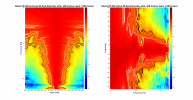 Klipsch RP-600 2D surface Directivity Contour Data.png262.3 KB · Views: 85
Klipsch RP-600 2D surface Directivity Contour Data.png262.3 KB · Views: 85 -
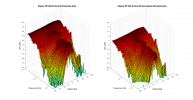 Klipsch RP-600 3D surface Vertical Directivity Data.png455.6 KB · Views: 90
Klipsch RP-600 3D surface Vertical Directivity Data.png455.6 KB · Views: 90 -
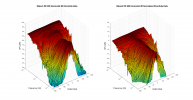 Klipsch RP-600 3D surface Horizontal Directivity Data.png466 KB · Views: 91
Klipsch RP-600 3D surface Horizontal Directivity Data.png466 KB · Views: 91 -
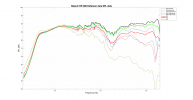 Klipsch RP-600 Reflexion data.png147.3 KB · Views: 71
Klipsch RP-600 Reflexion data.png147.3 KB · Views: 71 -
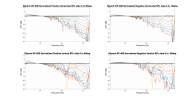 Klipsch RP-600 Normalized Directivity data.png294.8 KB · Views: 66
Klipsch RP-600 Normalized Directivity data.png294.8 KB · Views: 66 -
Klipsch RP-600 APO EQ LW 96000Hz.txt522 bytes · Views: 68
-
Klipsch RP-600 APO EQ Score 96000Hz.txt572 bytes · Views: 46
-
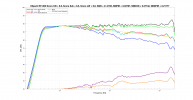 Klipsch RP-600 Score EQ Spinorama.png170.8 KB · Views: 64
Klipsch RP-600 Score EQ Spinorama.png170.8 KB · Views: 64 -
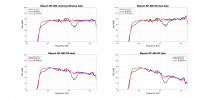 Klipsch RP-600 Zoom.png161.8 KB · Views: 49
Klipsch RP-600 Zoom.png161.8 KB · Views: 49 -
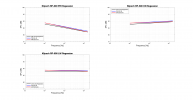 Klipsch RP-600 Regression - Tonal.png110 KB · Views: 72
Klipsch RP-600 Regression - Tonal.png110 KB · Views: 72 -
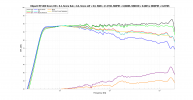 Klipsch RP-600 LW EQ Spinorama.png170.6 KB · Views: 78
Klipsch RP-600 LW EQ Spinorama.png170.6 KB · Views: 78 -
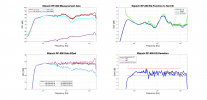 Klipsch RP-600 EQ Design.png233.4 KB · Views: 95
Klipsch RP-600 EQ Design.png233.4 KB · Views: 95 -
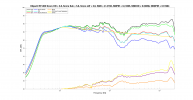 Klipsch RP-600 No EQ Spinorama.png184.8 KB · Views: 65
Klipsch RP-600 No EQ Spinorama.png184.8 KB · Views: 65 -
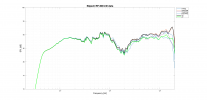 Klipsch RP-600 LW Better data.png148.4 KB · Views: 66
Klipsch RP-600 LW Better data.png148.4 KB · Views: 66 -
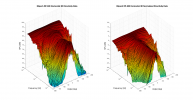 Klipsch RP-600 3D surface Horizontal Directivity Data.png466 KB · Views: 81
Klipsch RP-600 3D surface Horizontal Directivity Data.png466 KB · Views: 81 -
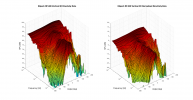 Klipsch RP-600 3D surface Vertical Directivity Data.png455.6 KB · Views: 64
Klipsch RP-600 3D surface Vertical Directivity Data.png455.6 KB · Views: 64 -
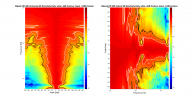 Klipsch RP-600 2D surface Directivity Contour Data.png262.3 KB · Views: 68
Klipsch RP-600 2D surface Directivity Contour Data.png262.3 KB · Views: 68 -
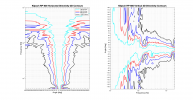 Klipsch RP-600 2D surface Directivity Contour Only Data.png193.2 KB · Views: 81
Klipsch RP-600 2D surface Directivity Contour Only Data.png193.2 KB · Views: 81
Last edited:
EDIT:
RME friendly version anyone?
Same cautions apply.
Score EQ RME: 6.1
with sub: 8.0
...Code:Klipsch RP-600 EQ RME 96000Hz October142021-120701 Preamp: -5 dB Filter 1: ON HPQ Fc 44.93, 0.00, 1.29 Filter 2: ON PK Fc 816.57, -2.64, 2.14 Filter 3: ON PK Fc 1780.16, 5.34, 1.49 Filter 4: ON PK Fc 4886.97, -0.98, 0.96 Filter 5: ON PK Fc 12592.33, -2.09, 2.15
@Maiky76 Thank you for the ‘RME friendly’ 5 band parametric equalization. I tried it with my Klipsch RP-600Ms + 2 subs (with band 1 @ 55Hz, -5dB, Q2.5), and it sounds very nice, about as nice as the Klipschs + subs sound without equalization. Whereas your filter suggestions may solve some FR problems of the Klipsch at close range (most notably the 1.78kHz problem), it doesn’t appear to change very much of the in-room response, at least not in my room at the listening position. Apart from some LF room-mode corrections, I actually prefer the sound without equalization.
After experimenting and speaker repositioning I ended up with the following filter sounding best in my system and in my room. There’s no equalization above 200Hz:
The resulting in-room frequency response at the listening position:
All attempts to improve FR above 200Hz resulted in lesser in-room SQ, or diminishment of the character of the Klipschs which I didn’t prefer. The LF room-mode corrections however are essential and much improve overall SQ in my room.
So, the Klipschs with subs only benefit from LF correction below 200Hz. Any correction above that range diminishes overall SQ in my system. Possibly HF parametric equalization leads to high CPU usage which electrically interferes with the analog output of the RME ADI-2 DAC, but that’s highly speculative..
This situation reminds me of Fuji Film during the 70s. Kodak's research relied on asking photographers what they wanted and the answer was accuracy. However, Fuji showed photographers different versions of photos and asked photographers to choose what they liked. What they liked wasn't accuracy but pumped up colors. That realization lead to huge commercial success for Fuji Film.
Klipsch is doing the same thing that Fuji Film was doing and that is observing what people prefer and not asking them what they prefer, and then giving that to them.
Just to see what the hype was all about with Klipsch speakers I got a pair of RB-51 II speakers based on the review of the CheapAudioMan. I realize this isn't completely apples to apples with the RP600M but I wanted to get a sense for what the characteristic "Klipsch sound" was. I have to agree with the Youtube reviewer IIWI on the RP600M that the characteristic Klipsch sound for this price category of Klipsch speaker is one which lacks body. The moment I played guitar solos it was very noticeable. The RB-51 II seems like a cheaply made speaker and it kind of sounds like a cheaply made speaker. It seems like the coloration of the unbraced cabinet is particularly noticeable because the character of the bass seems like it's coming out of a resonating wooden box.
My other 2 cents is that it seems as though speaker marketing which once took place mainly through audio magazines has move to Youtube. So all the compensation-for-review that magazines experienced also carried into Youtube reviews. Fortunately, Youtube also provides an outlet for reviews not controlled by a small number of audio magazine editors, so it's possible to find honest reviews not influenced by marketing dollars from speaker manufacturers. However, in the case of the Klipsch RP600M I have to wonder if the hype machine surrounding it is a triumph of Klipsch marketing ... cough Steve Guttenberg ... cough.
Klipsch is doing the same thing that Fuji Film was doing and that is observing what people prefer and not asking them what they prefer, and then giving that to them.
Just to see what the hype was all about with Klipsch speakers I got a pair of RB-51 II speakers based on the review of the CheapAudioMan. I realize this isn't completely apples to apples with the RP600M but I wanted to get a sense for what the characteristic "Klipsch sound" was. I have to agree with the Youtube reviewer IIWI on the RP600M that the characteristic Klipsch sound for this price category of Klipsch speaker is one which lacks body. The moment I played guitar solos it was very noticeable. The RB-51 II seems like a cheaply made speaker and it kind of sounds like a cheaply made speaker. It seems like the coloration of the unbraced cabinet is particularly noticeable because the character of the bass seems like it's coming out of a resonating wooden box.
My other 2 cents is that it seems as though speaker marketing which once took place mainly through audio magazines has move to Youtube. So all the compensation-for-review that magazines experienced also carried into Youtube reviews. Fortunately, Youtube also provides an outlet for reviews not controlled by a small number of audio magazine editors, so it's possible to find honest reviews not influenced by marketing dollars from speaker manufacturers. However, in the case of the Klipsch RP600M I have to wonder if the hype machine surrounding it is a triumph of Klipsch marketing ... cough Steve Guttenberg ... cough.
I recently tried out a Harbeth P3ESR and felt the same way. Weird sensation that a good part of the bass response is from the vibrating cabinet, like a tiny cello.It seems like the coloration of the unbraced cabinet is particularly noticeable because the character of the bass seems like it's coming out of a resonating wooden box.
Juampa1989
Member
- Joined
- Dec 2, 2021
- Messages
- 66
- Likes
- 18
estimó cuántos vatios del amplificador se necesitan para subirlo? el fabricante recomienda 100w por canal. ¿Puedes levantarte con menos?
Juampa1989
Member
- Joined
- Dec 2, 2021
- Messages
- 66
- Likes
- 18
¿Cuál fue el crossover del subwoofer?

Front/subs crossover is at 100Hz, 24dB/Octave, active Linkwitz–Riley..
I use a Schiit Vidar stereo amp; 2 x 100W in 8 ohm and 2 x 200W in 4 ohm speakers.estimó cuántos vatios del amplificador se necesitan para subirlo? el fabricante recomienda 100w por canal. ¿Puedes levantarte con menos?
Similar threads
- Replies
- 308
- Views
- 59K
- Replies
- 1
- Views
- 719
- Replies
- 3
- Views
- 829
- Replies
- 331
- Views
- 45K
- Replies
- 226
- Views
- 32K
